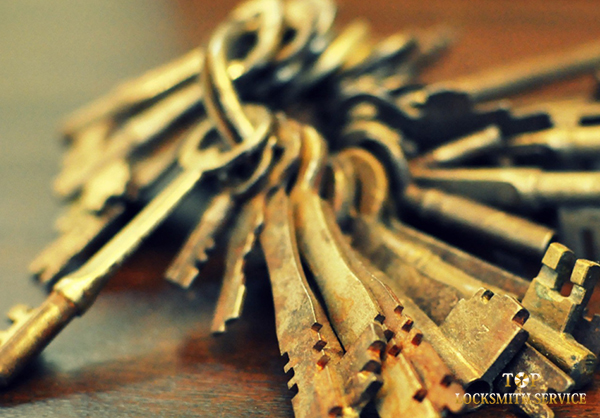Just as soon as humans assigned importance and value to material objects, they realized the need to keep these objects safe, secure, and protected. This cultural and monetary need allowed for the advent of the invention of locks and keys. The profession of locksmiths, master of the arts of designing, creating, and installing locks and keys, is one of the earliest forms of engineering of security devices and instruments or history.
Beginnings of Locksmiths
In Ancient Babylon and Egypt, around 4000 years ago, locksmiths created wooden tools that utilized the essential principles of pin tumblrs to prevent free movement of the large wooden bar that would hold doors shut. The pins could only be shifted with the use of a very large wooden key (which was made in the shape of a modern toothbrush) that was placed inside the lock and moved upwards, unlocking the door. One of these ancient locks was discovered in an excavation site of the Assyrian Empire, in Khorsabad City near the biblical city of Nineveh. This lock is estimated to have been created around the year 704 BC.
Medieval Metalwork
The origins of locksmithing can be linked to the profession of blacksmithing. Blacksmiths are engineers that work with metallurgy, forging devices out of steel and iron. During the Middle Ages, blacksmiths were tasked with military manufacturing- making tools of war (weaponry, defense items) for their monarch and leaders. As time passed, some blacksmiths with great skill regarding locks and keys decided to specialize in such – this is when locksmithing, as a specific profession, was born. Locksmiths were skilled metalworkers, blessed with the knowledge of shaping metal to their choosing, and the ability to create by hand a wide variety of original pieces to be included in keys, locks – or tools for filing keys and locks.
Industrial Perfection
As the industrial revolution occurred, locksmiths became a absolutely priceless and necessary fixture in society. After advanced metallurgy was mastered, locks and keys were created to be much more durable and lasting. Many locksmiths were able to customize, and improve on, designs that hadn’t been changed for countless generations, ages. As industrial mass production became mastered, the field of locksmithing began to change. Cheaply manufactured industrial locks took away the business from skilled individual artisans – splitting the profession into three fields – those who repair industrial locks (twiddling with individual pieces or repairing aspects of factory manufactured locks, those who copy keys for civilians who need more of them for personal use, and those who are contracted out for large security companies who design and manufacture massive security vaults for banks, museums, and governments.
Today, most locksmiths work out of a shop – a central studio where they complete all or most of their work. They utilize hardware meant to interact with doors – hinges, frame repairs, closers, etc) as well as making customized security layers for institutions (creating many layers of locks that protect against forced entry,) or work in specialty fields – such as forensic locksmithing (those who determine methods of entry for police investigations,) or automobile lock experts, who specialize in designing and repairing car locks. It’s pretty amazing to consider how much variety, skill, and expertise exists in locksmithing today – it’s been a long ride since Ancient Assyria, but locksmiths remain a necessary staple of any functioning society.
